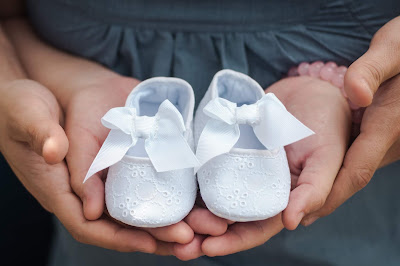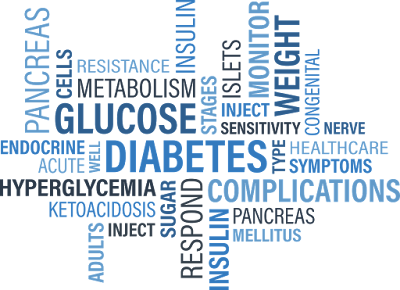Cancer, its causes, symptoms, diagnosis and treatment and prevention
Cancer, its causes, symptoms, diagnosis and treatment and prevention
There are over 100 different types of
cancer. It can affect almost any organ
in the body. The most common forms of cancer in North America are lung cancer,
breast cancer, and prostate cancer. There are 6 major categories of cancers:
- carcinomas are
tumours that start in the exterior or interior linings of the internal
organs (called epithelial tissue) and on the exterior surface
of the body
- leukemias are
cancers of the blood-forming tissues
- lymphomas are
tumours that originate in the lymphatic system
- melanomas are cancers that start in the cells that form pigment in skin
- sarcomas are
tumours that originate in connective tissue, such as muscle, bones, and
cartilage
- mixed types are cancers with characteristics from more than one category
As someone's body grows, certain cells divide and
multiply to create new tissue, while other cells (like muscle or nerve cells)
do not divide and multiply. The body has specific genes called oncogenes that
control the ability of cells to divide and grow. Genes called tumour
suppression genestell the cells to stop dividing. Cancer occurs when either
the oncogenes are "turned on" when they aren't supposed to be, or the
tumour suppression genes are "turned off" when they're supposed to be
on. This results in excess growth in the form of tumours.
Cancer cells go through different
stages as they divide and multiply to form a tumour. At first, normal cells divide faster than
they should and the total number of cells increases. This is called hyperplasia.
At the second stage, called dysplasia, the new cancer cells look
misshapen. The cancer cells then form a growing ball of cells, called a primary
tumour. The tumour begins to push and squash the cells around it. As the
tumour grows bigger, it burrows and invades into surrounding cells – this
process is called invasion. When cancerous cells spread into a
blood vessel or a lymph node, they can travel in the blood or lymph fluid to
other parts of the body where they start to divide once again. This process is
called metastasis, which means that the cancer has spread to other
areas of the body.
Cancer causes more fear than any other disease.
However, many cancers can now be treated and put into remission. This means
traces of cancer are no longer found in the body following treatment. For
example people with prostate, bladder, skin, uterine, or breast cancer have at
least an 80% chance of being disease-free (without cancer) 5 years after being
diagnosed with cancer, assuming the cancer was detected and treated at an early
stage.
Causes
The exact cause of cancer is not
known, but various factors are likely at play. Although genetic factors have been linked to
certain types of cancers, less than 10% of cancers are inherited. Less than 10%
of breast cancers are associated with mutated genes known as BRCA1 and BRCA2.
These two inherited genes account for about 50% of the inherited forms of
breast cancer.
Most forms of cancer are due to genetic mutations
of cells that occur within a person's life as a result of environmental factors
such as cigarette smoke or exposure to radiation. Exposure to the following
environmental factors can cause cancer:
- tobacco smoking: Smoking causes lung cancer and is also associated with an
increased risk for cancers of the mouth (oral cancers), larynx, esophagus,
bladder, and cervix.
- chemicals: Exposure
to industrial dyes, asbestos, and benzene is linked to cancer.
- ionizing radiation: A connection between ionizing radiation and cancer has been
made, but the exact amount of radiation exposure that increases the risk
of cancer is not known.
- viruses: Certain
viruses, such as the human immunodeficiency virus (HIV,
which causes AIDS) are associated with an increased risk of liver cancer,
lymphomas, and sarcomas. The human papillomavirus (HPV,
which causes venereal warts) is associated with an increased risk of oral,
anal, and cervical cancer.
- sunlight: Prolonged
exposure (e.g., sun tanning) causes skin damage and may result in skin
cancer.
Symptoms and Complications
Cancer can cause many different types
of symptoms depending on the type of cancer and what stage it's in. Cancer cells pressing on or invading
surrounding cells can cause severe pain. Organs (like the liver or pancreas)
that are being invaded by the cancer can't work properly. Some symptoms, called paraneoplastic syndromes,
are caused not by the tumour itself but by chemicals or hormones produced by
the tumour. The chemicals and hormones can cause an autoimmune reaction where
the body produces antibodies against itself. They can also affect the normal
functioning of organs or even kill healthy cells.
Some of the complications of cancer
can be life-threatening. Cancer can
cause fluid to fill the sacs surrounding the heart or lung, making it very hard
to breathe. Cancer can also block the veins that return blood from the upper
parts of the body to the heart. This causes the veins in the chest and neck to
swell. Cancer can also press on the spinal cord or spinal cord nerves, causing
pain or the loss of function of the nerve. The longer a nerve has been damaged,
the less likely it will recover. Hypercalcemic (high calcium)
syndrome occurs either when a cancer produces a hormone that dangerously raises
the body's calcium levels or when cancer extensively invades the bones.
Diagnosis
Cancer specialists called oncologists will
evaluate symptoms, perform a physical examination, and order blood tests and
X-rays. The only way to tell for sure
whether cells are cancerous, however, is to take a tissue sample, called
a biopsy. The cells are looked at under a microscope. Doctors can
tell the type and stage of cancer based on the biopsy sample.
At the time of diagnosis, staging of the cancer is
done to help determine the prognosis and type of treatment a patient should
receive. Doctors basically classify the cancer according to a staging system
called the "TNM system," which describes the size of the tumour and
the extent of cancer spread. The choice of treatment will largely depend on the
stage of the cancer.
Treatment and Prevention
Certain types of cancers can be
prevented through lifestyle modifications –
this is known as primary cancer prevention. Tobacco-related cancers
(e.g., lung cancer) account for almost one-third of all fatal types of cancer;
therefore, quitting smoking is key for preventing cancers of the mouth, throat,
esophagus, and lungs. Avoiding and limiting sun exposure, and using adequate
protection (SPF lotions and sunscreens) while in the sun, will reduce the risk
for developing skin cancer. Diet is another important area for cancer
prevention. A high-fat diet is associated with a higher risk for certain
cancers (such as breast and prostate), while a high-fibre diet has long been
thought to reduce the risk for colon cancer.
Surgery, radiation, chemotherapy,
and, for some cancers, hormones or hormone-blocking medications are all used to
treat cancer. The goal of cancer treatment is
to kill cancerous cells while killing as few healthy cells as possible in the
process.
Surgery is used to remove cancer
cells that are packed together. Many cancers are treated with surgery. Surgeons will also remove normal cells around
the cancerous cells or tumour to determine if the cancer has spread or not.
Once the cancer has spread, it's very difficult to remove cancer cells with
surgery.
Radiation is used to treat localized
cancers. Radiation therapy can take a
number of different forms. A beam of radiation can be aimed onto the skin near
the site of the cancer. The radiation kills the cancer cells. Unfortunately, it
also kills healthy cells. Newer radiation machines are getting better at
focusing the radiation only on the cancerous cells, and not the normal cells.
Radioactive particles can also be injected into the blood. The particles stick
to cancerous cells, but not to normal cells. Sometimes, small radioactive
particles are placed right into an organ next to the cancer, giving the
cancerous cells a much higher dose of radiation than the normal cells.
Chemotherapy is treatment that uses
anticancer medications. It's often
used when the cancer has spread throughout several areas of the body. For many
cancers, a combination of medications is used because it works better than just
one medication. A complete response to chemotherapy is when
all detectable cancer has disappeared. However, some cancer cells may still
remain in the body and are undetected. As a result, the cancer may grow back
after a period of remission. A partial response is when the
cancer shrinks by more than half. Unfortunately, many cancers become immune to
the anti-cancer medications over time. There are certain types of cancers
(e.g., breast cancer) that are influenced by hormones; they can be treated with
hormones or hormone-blocking medications to slow their growth.
Genetic engineering is being used to
control the genes that turn cancer growth on and off and to control the enzymes
that allow cancer cells to continually divide and grow. Cancer vaccines, antibodies combined with
poisons, and chemicals that turn off blood vessel growth in cancers, are some
of the newer developments being investigated in the battle against cancer.




Comments
Post a Comment